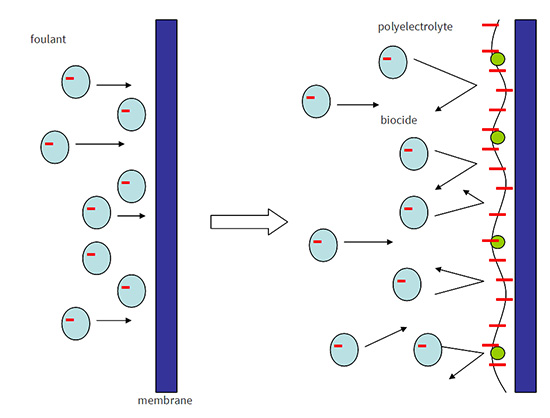

Membrane processes, such as reverse osmosis (RO) and electrodialysis (ED), are widely used to produce a drinking water from seawater, underground water and surface water. However, a fouling is a serious problem in the membrane processes since the fouling reduces the performance of process. The fouling is distinguished in three categories depending on foulant, inorganic fouling, organic fouling and biofouling.
Among them, our researches are focused in organic fouling and biofouling. Organic foulants are humic acid, proteins, surfactants and so on, and most of them have a negative charge. The typical foulant in biofouling is E. Coli and it also has a negative charge. Figure 1 shows our concept to improve an antifouling potential.
 Fig. 1: Concept to improve an antifouling potential of membranes. |
If we can give a negative charge to membrane surface by a surface modification with polyelectrolytes, the fouling will be reduced by the electrostatic repulsion between foulants and negative surface charge. In addition, it is expectable to increase a hydrophilicity of membrane surface by giving charged groups on the membrane surface.
It is known that the hydrophilic surface shows a high antifouling potential. Thus, the surface modification with negative polyelectrolytes will increase the antifouling potential of membrane by the electrostatic repulsion and the high hydrophilicity. If biocidal materials are embedded in the polyelectrolyte layer, the antibiofouling potential will be further improved.